I am always looking for ways to improve the management of my suckler cows to enable me to actually make some money from them.
Over the years, I have improved my grassland management, silage making and genetics, and while all this helps, there is one thing that must happen first – you need to have a calf from every cow every year.
This sounds very basic, but if you haven’t got a calf, everything else is irrelevant.
There are two major factors affecting this. You must get the cow in-calf, and then you must successfully get the calf out. That means having good heat detection at breeding time (as I use AI) and then being ready to assist when the cow is going to calve.
I have two Moocall heat collars, which are a superb help for heat detection and well worth having. I also have two Moocall calving sensors, which are very useful for giving a rough idea when the cow is going to give birth.
Close to calving
I have been working with cows for upwards of 40 years and usually I am able to tell if a cow is getting close to calving. But there are other times that I get it completely wrong, and have a cow standing in a calving pen for a number of days, or I miss them and the calf pops out without me knowing.
I try to base my judgement on the pin bones, which is something that my father taught me, and something I have tried to pass on to my sons.
I check all the cows at least two or three times a day for movement on the pin bones. If you handle the bones regularly then you can usually detect movement or changes.
The problem is that some cows (especially the older ones) will let their bones down a few days before they calve and some younger cows won’t let their bones down until the last minute.
When I see movement on the pin bones, the policy is to put the cow into a calving pen and put the Moocall calving sensor on her tail. When you get it right a few times in a row, you could get lulled into thinking you have cracked it, but I still get too many wrong, and when this happens it makes you feel a little stupid.
Tight calving
This year, my cows are all calving very close together, so it is even more important that I get most of them right.
I am only three weeks in and already more than 70% of my cows and heifers have calved. With only limited numbers of calving pens, I can’t afford to have the wrong cows in them.
Heifer missed
There was one evening that I had all the calving pens filled and I noticed a little movement on a heifer’s pin bones.
It was only a slight bit of movement on one bone, so I decided to leave her to the morning. I checked her around half past twelve and she was content, with no sign of calving.
Next morning about seven, I walked into the cattle house and the heifer had an afterbirth lying beside her, so I knew she had calved. But the calf wasn’t there.
I checked the next pen, to find the calf standing in the middle of other cows. The heifer must have calved beside the gate and the calf slipped under it.
I got both into a calving pen. The heifer didn’t lick the calf, but that happens sometimes with first-time mothers.
I pushed the calf in towards the udder and it sucked, so I thought all was fine. Then the next day, I discovered that she was kicking the calf and not letting it suck.
Since then, I’ve had to keep them separate and stand with her (twice a day) to get the calf fed. She isn’t too bad with it, but if I wasn’t there, the calf wouldn’t get any milk.
Given the effort all this is taking, I’m getting plenty of time to regret not putting her into a calving pen a few nights ago.
Calving suckler cows can be very rewarding, but the mistakes live longer in the memory than the successes.
Read more
Watch: Farmer Writes - 20 years working with AI
A passion for sucklers that runs deep
I am always looking for ways to improve the management of my suckler cows to enable me to actually make some money from them.
Over the years, I have improved my grassland management, silage making and genetics, and while all this helps, there is one thing that must happen first – you need to have a calf from every cow every year.
This sounds very basic, but if you haven’t got a calf, everything else is irrelevant.
There are two major factors affecting this. You must get the cow in-calf, and then you must successfully get the calf out. That means having good heat detection at breeding time (as I use AI) and then being ready to assist when the cow is going to calve.
I have two Moocall heat collars, which are a superb help for heat detection and well worth having. I also have two Moocall calving sensors, which are very useful for giving a rough idea when the cow is going to give birth.
Close to calving
I have been working with cows for upwards of 40 years and usually I am able to tell if a cow is getting close to calving. But there are other times that I get it completely wrong, and have a cow standing in a calving pen for a number of days, or I miss them and the calf pops out without me knowing.
I try to base my judgement on the pin bones, which is something that my father taught me, and something I have tried to pass on to my sons.
I check all the cows at least two or three times a day for movement on the pin bones. If you handle the bones regularly then you can usually detect movement or changes.
The problem is that some cows (especially the older ones) will let their bones down a few days before they calve and some younger cows won’t let their bones down until the last minute.
When I see movement on the pin bones, the policy is to put the cow into a calving pen and put the Moocall calving sensor on her tail. When you get it right a few times in a row, you could get lulled into thinking you have cracked it, but I still get too many wrong, and when this happens it makes you feel a little stupid.
Tight calving
This year, my cows are all calving very close together, so it is even more important that I get most of them right.
I am only three weeks in and already more than 70% of my cows and heifers have calved. With only limited numbers of calving pens, I can’t afford to have the wrong cows in them.
Heifer missed
There was one evening that I had all the calving pens filled and I noticed a little movement on a heifer’s pin bones.
It was only a slight bit of movement on one bone, so I decided to leave her to the morning. I checked her around half past twelve and she was content, with no sign of calving.
Next morning about seven, I walked into the cattle house and the heifer had an afterbirth lying beside her, so I knew she had calved. But the calf wasn’t there.
I checked the next pen, to find the calf standing in the middle of other cows. The heifer must have calved beside the gate and the calf slipped under it.
I got both into a calving pen. The heifer didn’t lick the calf, but that happens sometimes with first-time mothers.
I pushed the calf in towards the udder and it sucked, so I thought all was fine. Then the next day, I discovered that she was kicking the calf and not letting it suck.
Since then, I’ve had to keep them separate and stand with her (twice a day) to get the calf fed. She isn’t too bad with it, but if I wasn’t there, the calf wouldn’t get any milk.
Given the effort all this is taking, I’m getting plenty of time to regret not putting her into a calving pen a few nights ago.
Calving suckler cows can be very rewarding, but the mistakes live longer in the memory than the successes.
Read more
Watch: Farmer Writes - 20 years working with AI
A passion for sucklers that runs deep




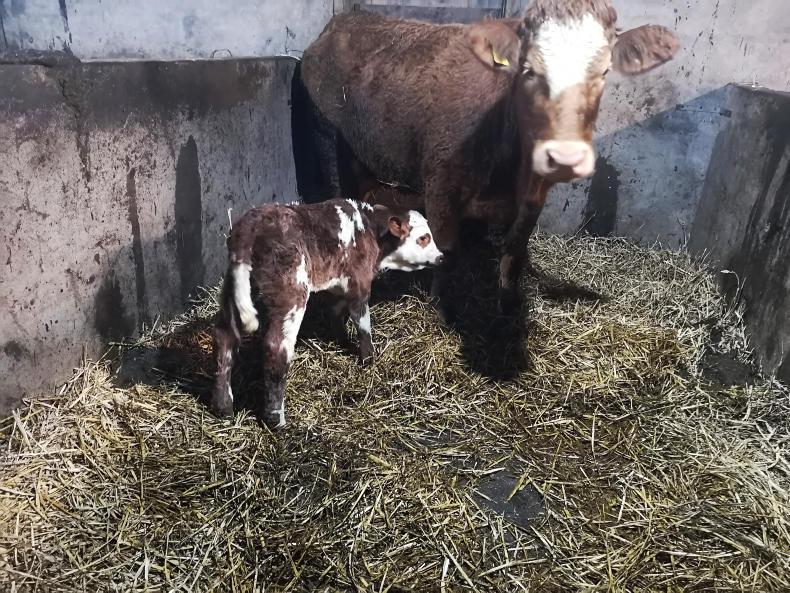
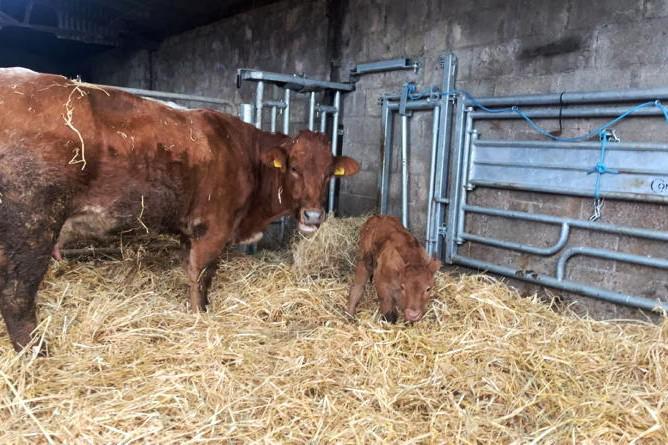

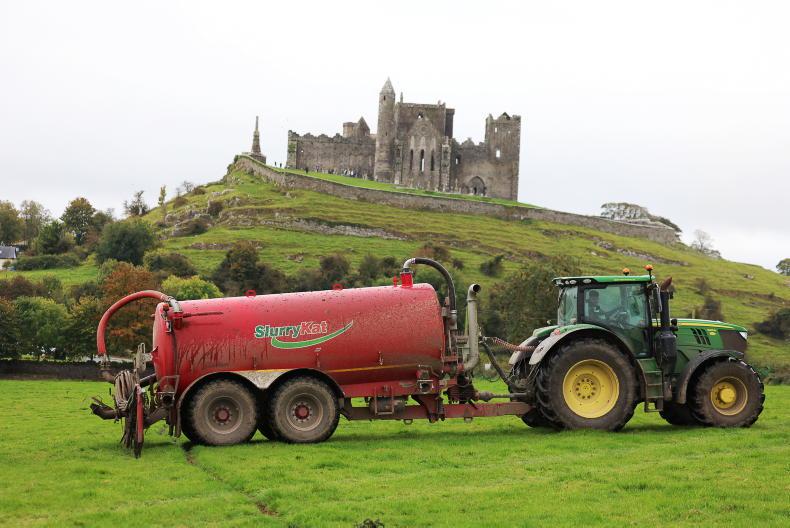
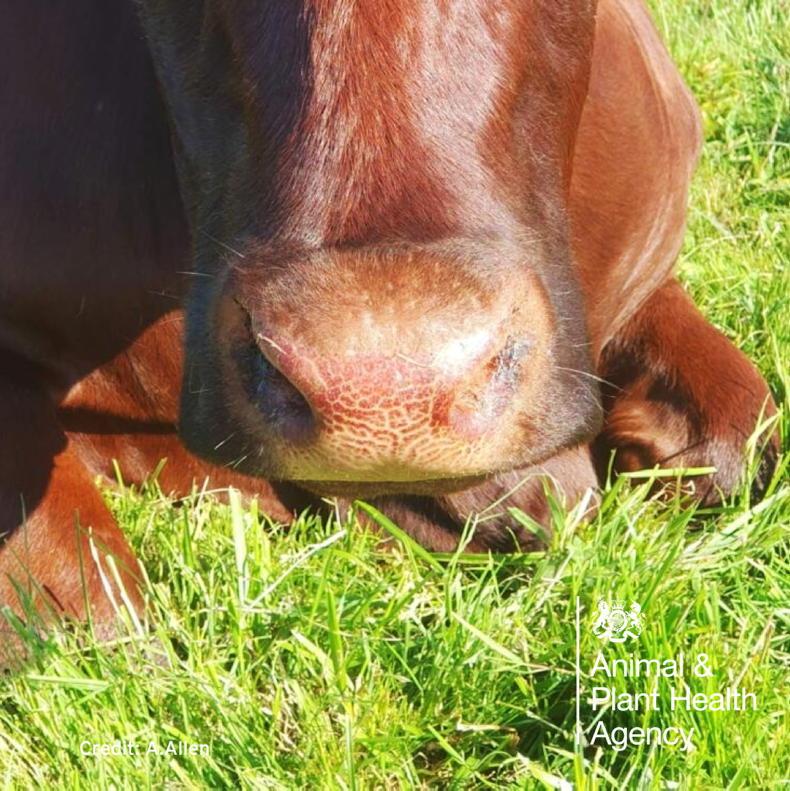
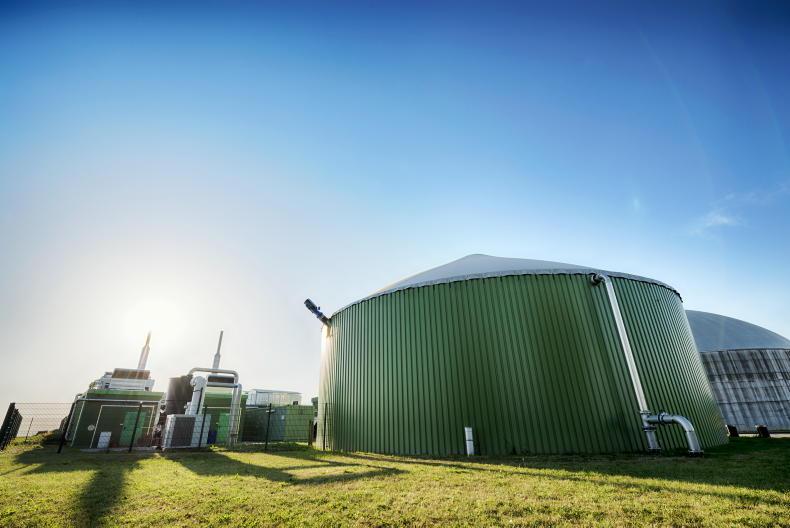
SHARING OPTIONS